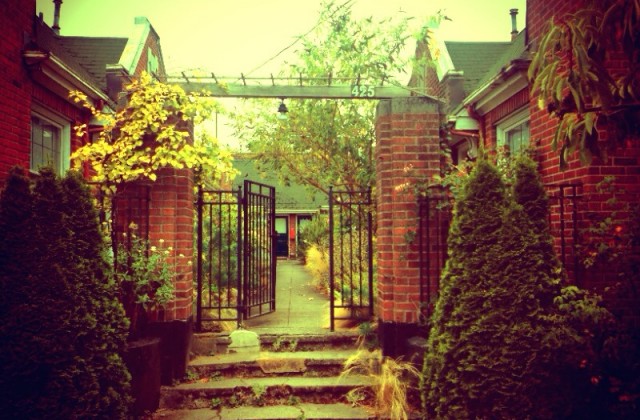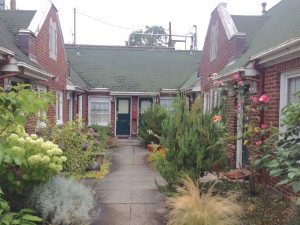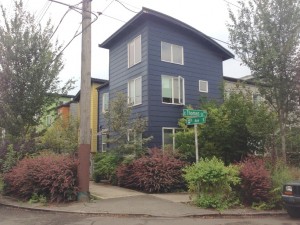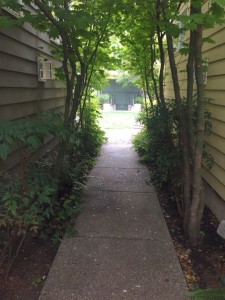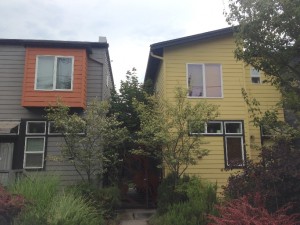More Family Housing: Change Values, Change Zoning
Earlier this year the Seattle Planning Commission released a Family Sized Housing Action Agenda calling for renewed efforts to create affordably priced housing for families in the City. Just recently A-P Hurd pointed out at the Atlantic’s City Lab blog that there are two regulatory hurdles that, when taken together, almost ensure that larger housing for families won’t get built affordably in the city: parking requirements and density and typology limits in single-family neighborhoods.
The typical assumption about the problem starts out on the wrong foot, considering the relative price and quantity of affordable two and three bedroom apartments.
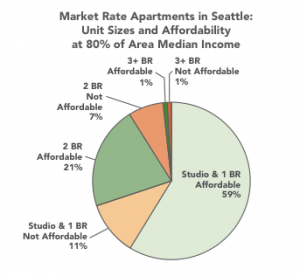 The Planning Commission starts out this way too in its white paper, pointing out the scarcity of larger apartments.
The Planning Commission starts out this way too in its white paper, pointing out the scarcity of larger apartments.
As of 2009, just 2 percent of market-rate apartment units in Seattle have 3 or more bedrooms, and half of that tiny fraction are affordable to low- income families.
The Commission’s review seems to write off the detached single-family typology as more or less out of reach.
Detached single-family, duplex, and triplex rentals are an important, but limited source of family-sized housing affordable to low and middle-income families.
But the same thing is true currently of apartments. Why is it that the commission and most of us tend to think the large family issue will be resolved in the multifamily type of housing rather than single family? The assumption is largely based on an inversion of our perception of the value of multifamily and single-family property.
Ask almost anyone not in the real estate business and ask her whether her property would be worth more zoned single-family or multifamily. Most people would answer that the higher value is in single-family. That’s an indicator of social values, not economic ones.
Hurd points out in her post that a typology called perimeter housing has great promise to create housing for family. The type is common in Europe and houses many families in dense urban envrionments. Perimeter housing is
Row-houses are built continuously around a central courtyard. The kitchens and living spaces are on the ground floor facing the courtyard, allowing a free flow of children and parents between the indoor and outdoor spaces. The cost of perimeter block housing is very competitive with apartments and often less expensive than townhouses.
Obviously requiring parking for these kinds of projects would add lots of costs. For most of us in the world of real estate and housing that’s a given and it’s why smart growth advocates push for no parking minimums; parking might be something worth building if customers want to buy it, but it always adds costs to housing.
But Hurd makes another important point. Because the perimeter housing idea is always implemented in multifamily zones, the land is much more expensive. There are two great examples in Seattle, one older and one newer that use the idea of a central courtyard and are built in one of city’s densest neighborhood, Capitol Hill.
In practice, this means that two or three story, small-footprint perimeter block housing can only be built in zones where four or five or six story apartment buildings are also allowed. Given a certain cost for the land, it will always be more profitable to build to the maximum height and density in these zones, thereby making perimeter block housing the least profitable option.
There are a couple of examples of housing that approaches the perimeter model in one of Seattle’s densest neighborhoods Capitol Hill.
Here’s Broadway Court, an older building,
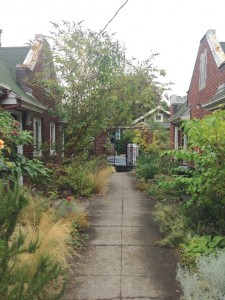
and the newer Secret Garden, by the Madrona Company.
Secret Garden isn’t rental housing but was built as condos. But the point is there are examples, however few, of the typology we could aim for. But how would we motivate the market to produce more housing like this?
Allowing perimeter block housing within single family zones, where it would be the most profitable form in that zone, would result in much more of it being built.
Lower land costs in single-family zones could make these projects, but it would require a major paradigm shift in thinking among policy makers that would allow more innovation in the single-family space. Too bad that lately we’ve seen the opposite approach, making it harder to build in single-family.
